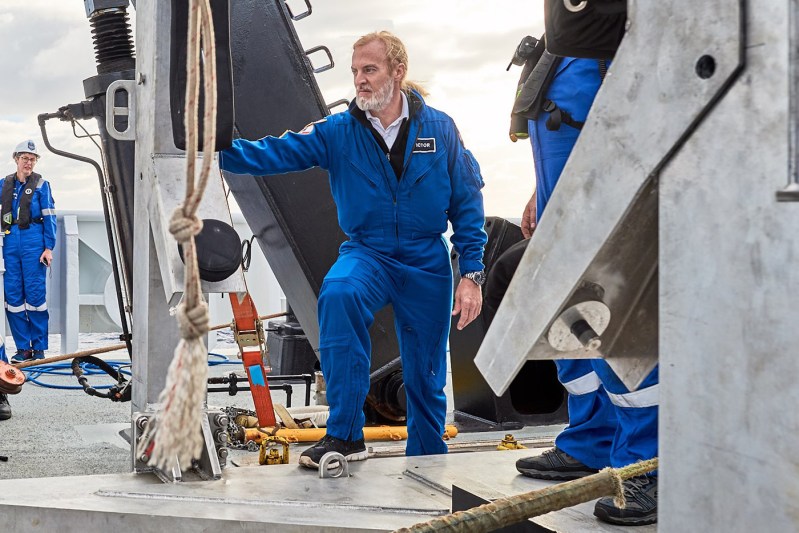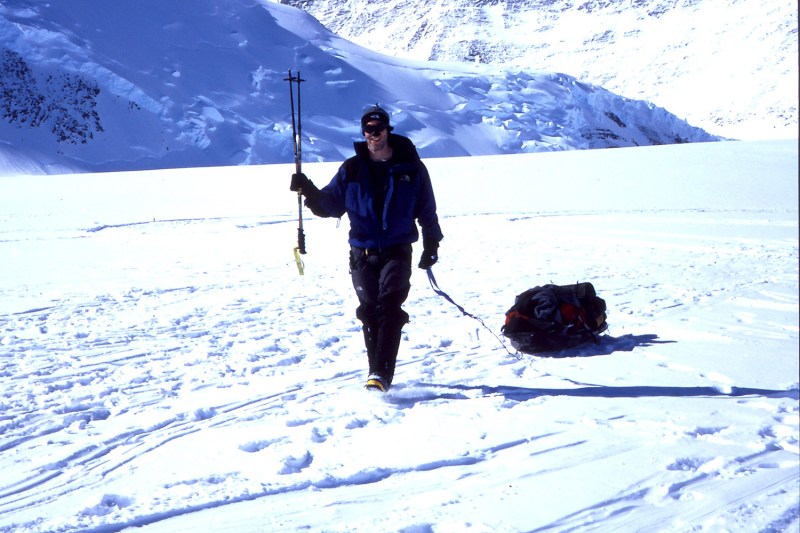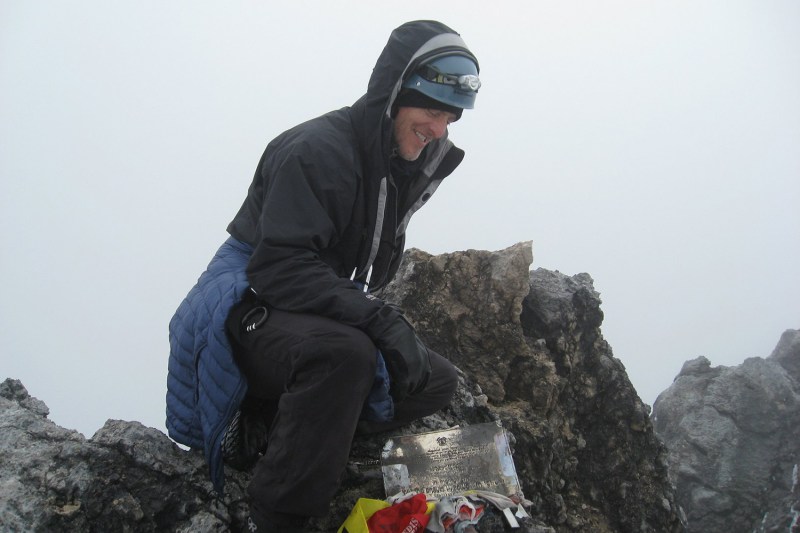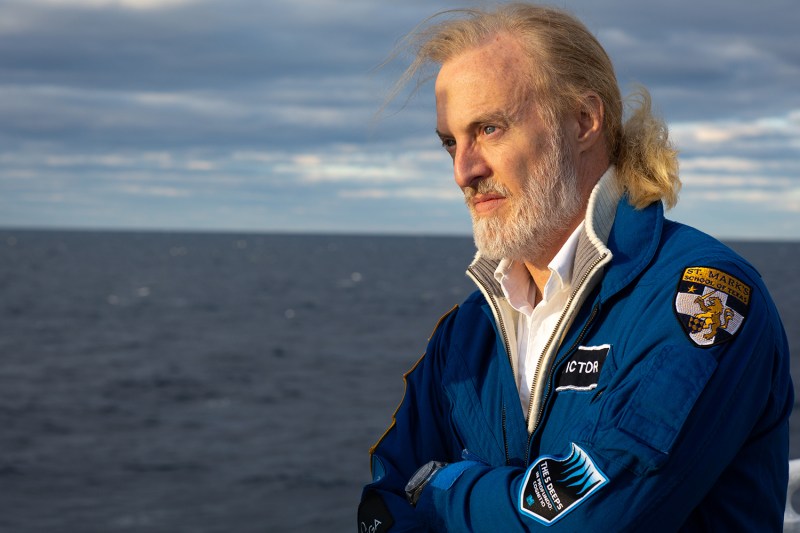
Victor Vescovo is, in his own words, “just trying to do as much as I can with the short time we have here.” And after learning about his incredible adventures, you’ll likely agree.
After all, Vescovo, 54, has literally seen the highs and lows of the world. In 2019, the former U.S. naval officer (now a private equity investor) set a Guinness World Record for reaching the highest and lowest points on Earth, after diving with a crewed vessel (as part of the famed Five Deeps Expedition) to the bottom of Challenger Deep in the Pacific Ocean, a depth of about 35,700 feet. Just nine years before this feat, he climbed the top of Mount Everest — the Earth’s highest point at approximately 20,000 feet.
Along the way, he reached the Explorers Grand Slam, a goal to climb the peak of the highest mountain on all seven continents, and reach the North and South Poles.
Like most great men, Vescovo is humble with his accomplishments. When asked about himself during a recent interview with The Manual, he said he, “attended a few different schools on both the east coast and the west coast.” The schools he breezed over include an undergraduate economics degree at Stanford, an MA in Defense and Arms Control Studies at MIT, and an MBA at Harvard. And he’s amassed a sizable fortune as a private equity investor, which has allowed him to pursue his expensive passion for exploration.

Vescovo describes each adventure and accomplishment to us not with pomp and bravado but rather with the enthusiasm and measure of a man who knows exactly what he’s about. Vescovo, in other words, isn’t trying to impress anyone, he’s just attending to his own insatiable fascination.
Asked how he feels after achieving a specific goal, be it standing on Everest or resting at the bottom of the ocean, Vescovo explains that it’s primarily about focus, not celebration. “That’s just my nature,” says Vescovo, who’s currently based in Dallas, Texas. “When I finally got to the top of Everest, there was a bit of a storm going. Visibility was maybe 200 feet, maybe less. When we finally got to the summit, there was a bit of time for pause and celebration, but I was up there for less than 15 minutes. The overarching feeling was, ‘Okay, we need to get out of here, because this could get much worse. Quickly.”
Related Guides
When he reached the deepest parts of the ocean with the Five Deeps Expedition, the situation felt less dire, and he reflected on the advice of Hollywood director James Cameron, who had also dove down the Marina Trench a few years before. “James Cameron said, ‘You know, one thing you really should do that I didn’t do is when you get to the bottom, just stop talking to the surface, turn your thrusters off, and just appreciate where the f–k you are.’ And I did that … I reclined in my pilot’s seat, and right outside the windows I could see the very bottom of the ocean, and I just sat down there and ate my lunch, a tuna fish sandwich.”
What is it that drives a man to climb, dive, fly, and see the world? The sense of adventure? The science to be done? Or is it simpler than that? Recall the words of early 20th-century mountaineer George Mallory who, when asked why he wanted to climb Everest, replied: “Because it’s there.”
For Vescovo, however, the motivation is intrinsic, not extrinsic. “I think part of it, a lot of it, really, is just what’s in our nature. It’s almost genetic. I mean I talked to our expedition doctor and some other people and I think there’s definitely a trait, call it a personality trait or genetic trait, but I just have this compulsion to see what’s on the other side of the hill. I get stir crazy if I’m sitting in one place for too long, sitting in an office too long. I’ve got to get out, to do things. Otherwise, I’m just not happy, and we should do things that make us happy.”

That striving for accomplishment (and happiness) has come with plenty of challenges, such as the multi-year process of the Five Deeps Expedition, which is the first manned voyage to the deepest points in the world’s five oceans. Testing their submersible — a two-person titanium dive craft named Limiting Factor — was fraught from the start because the expedition was unprecedented. “Any submersible that went down to the Challenger Deep never did it again,” Vescovo explained, “and we were trying to develop something that absolutely could do that. So there were some very difficult times trying to figure out how to do it. We went through literally eight figures spending our way through it all, but we came out with a craft that worked, and that worked again and again.”
The feeling after the submarine worked again and again was joy and satisfaction for the whole team, but not surprise. “The thing is, we knew success was coming, really. After we dived to the bottom of the Atlantic, some 8,000 meters down, we thought ‘OK, this thing works. It’s probably going to get to the Mariana Trench without a problem.’ And then it did, and four times in 10 days. So from then on, we really knew it would work, and it was just a matter of getting to the Titanic, the Tonga Trench, the Molloy Deep,” and he continued, rattling off the list of records set as though relating a grocery list,
Asked what advice he would give people who have a longing for adventure, Vescovo is usually circumspect. “My first answer often frustrates people, but you have to start here,” he says, pointing to his head. “If you want to climb a mountain or dive a deep ocean, or anything extraordinary, really, first you have to develop the mental capacity and the will to see it through, the willingness to devote the time, the finances, the energy, and also to understand and accept how committing to something like this will affect your relationships, because this stuff is not easy.”

In other words, start with a more attainable adventure that still pushes you outside of your comfort zone. “Climbing is a brilliant one because it’s a combination of mental and physical strength, and it’s not that expensive to climb a 14 or even an 18-thousand foot mountain,” he says. ”
What more can a man do has literally seen the world? Get out of it, of course.
“I’d love to go into space,” Vescovo says with a smile. “I mean I’ve been to the top of the world and the bottom of it, so that’s just what’s next, to go into orbit. And it looks like there are some commercial operators that just might make that possible in my lifetime.”



